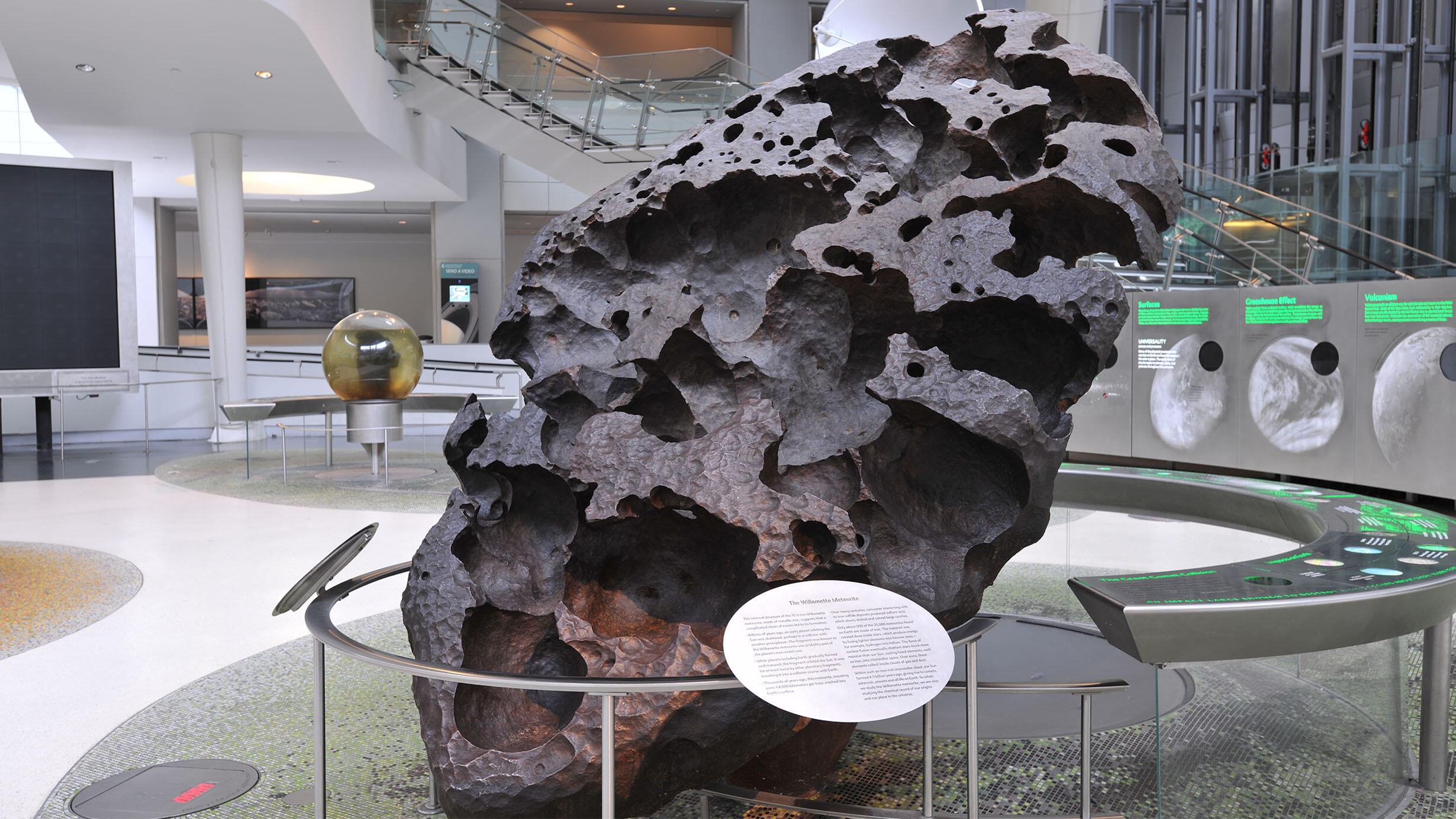The Willamette Meteorite
Part of Hall of the Universe.
 D. Finnin/© AMNH
D. Finnin/© AMNH The Willamette Meteorite weighs 15.5 tons. This iron meteorite, which was found in Oregon, is the largest ever found in the United States and the sixth-largest in the world. The smooth surface melted during its blazing entry into the atmosphere, while the pits formed on the Earth's surface.
Iron meteorites form when large enough asteroids have had molten interiors catastrophically collide with other asteroids. These huge collisions blast out material from the molten iron core of the asteroid on orbits that reach Earth after millions of years.
The internal structure of the 15.5-ton Willamette meteorite, made of metallic iron, suggests that a complicated chain of events led to its formation:
Billions of years ago, an early planet orbiting the Sun was shattered, perhaps in a collision with another protoplanet. The fragment now known as the Willamette meteorite was probably part of the planet’s iron-nickel core.
While planets including Earth gradually formed and matured, the fragment orbited the Sun. It was hit at least twice by other planetary fragments, knocking it into a collision course with Earth.
Thousands of years ago, this meteorite, traveling some 64,000 kilometers per hour, crashed into Earth’s surface.
Over many centuries, rainwater interacting with its iron sulfide deposits produced sulfuric acid, which slowly etched and carved large cavities.
Only about 600 of the 25,000 meteorites found on Earth are made of iron. The material was created deep inside stars, which produce energy by fusing lighter elements into heavier ones - for example, hydrogen into helium. The force of nuclear fusion eventually shatters stars much more massive than our Sun, casting fused elements, such as iron, into interstellar space. Over eons, these elements collect inside clouds of gas and dust.
Within such an iron-rich interstellar cloud, our Sun formed 4.5 billion years ago, giving rise to comets, asteroids, planets and all life on Earth. So when we study the Willamette meteorite, we are also studying the chemical record of our origins and our place in the universe.
Tomanowos
The Willamette Meteorite was originally located within the Upper Willamette Valley of Oregon, near the present-day city of Portland. The Clackamas Indians lived in the valley before the arrival of European settlers. The Clackomas named the meteorite "Tomanowos." According to the traditions of the Clackamas, Tomanowos is a revered spiritual being that has healed and empowered the people of the valley since the beginning of time. The Clackamas believe that Tomanowos came to the valley as a representative of the Sky People and that a union occurred between the sky, earth and water when it rested on the ground and collected rainwater in its basins. The rainwater served as a powerful purifying, cleansing and healing source for the Clackamas and their neighbors. Tribal hunters, seeking power, dipped their arrowheads in the water collected in the meteorite's crevices. These traditions and the spiritual link with Tomanowos are preserved today through the ceremonies and songs of the descendants of the Clackamas. Beginning in the 1850's, the Clackamas, along with more than 20 other tribes and bands from western Oregon and northern California, were relocated to the Grand Ronde Reservation. Today, the Confederated Tribes of Grand Ronde, a federally recognized Indian tribe, is the successor of the Clackamas.